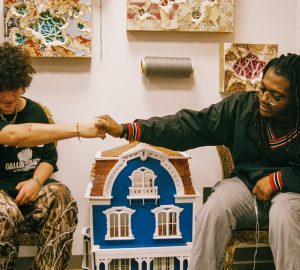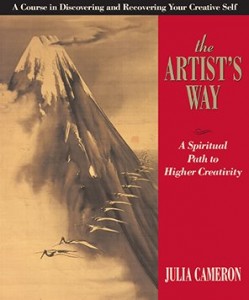Once upon a time, I was afraid to call myself a writer. Many creative people go through some trial of self-naming. Inherent in that act of identifying as a creative professional, you are staking your claim in the world, and that can be scary. Rather than moving up and forward, I kept circling back and around, worried about what may lie ahead.
Those were some dreadful days. I would come up with big ideas, and then systematically check off reasons why they would never work out. A writer about my age would be featured on NPR, and I’d slap my palm against my leg in the car saying, “See? It’s too late for me!” We’ve all had those days. I call them the Big Fatty Failure days. When your past accomplishments seem like they happened a lifetime ago, when not much in the future looks bright. People just loved spending their time with me.
My friend and mentor Ann recommended “The Artist’s Way,” by Julia Cameron. Written by a creative professional for other professionals and aspiring artists, Ann thought it would help me get over the hump that was taking over my life (and everybody else’s). I’ve come to believe that this is a book that finds you. A friend or colleague always suggests it, in a not-so-suggestive way. “Get the book,” Ann said. I complied.
“The Artist’s Way” is a workbook, which was my first concern. There are 12 chapters for 12 weeks of “discovering and recovering your creative self.” Now, I was really apprehensive. I’m all for the feel-good, love yourself lessons, but didn’t Ann know I needed something practical? This was no time for woo woo reading. But I opened the book, and started the introduction.
“How can you teach creativity?” people ask Cameron.
She replies, “I can’t. I teach people to let themselves be creative.” So, there was something in me, inhibiting my ability to be who I really was? Now, I was interested.
Cameron believes that we are all creative, every last one of us, but somewhere along the way, we forgot (yes, even those of us in art school). She asks that we consider our inner artist is a child, a child who needs support and nurturing. You remember. That child who sang in the bathtub and never considered whether or not the performance was concert-worthy. That child who wrote poems and handed them out to any able-bodied person who crossed their path. “Oh yeah,” I started to say. That girl. Me.
Each week, in each chapter, Cameron provides a bit of context and some exercises. Tools that will help you on your way to recovery — a creative life where you are comfortable in your own skin, where ideas come easily, where you are living your dreams. Sounded nice.
One of those tools are the morning pages. Every morning you write three pages, longhand. No more, no less, just three pages of whatever is on your mind. After a few days, I went from hating the morning pages to needing them. I started to say things on the page that I didn’t know I felt until I was looking at the words.
As creative people, we are constantly questioning ourselves, second-guessing our choices. The morning pages are a place to not do that. They are an access to unearthing what lies beyond that unforgiving censor who never shuts up. In doing “The Artist’s Way,” you get very good at thanking your inner critic for sharing, and moving on with your life. Doubt doesn’t stop you the way it did before.
Another tool Cameron uses is the artist’s date. Remember that artist child you identified? Go take her out on a date. Just you and your inner artist, no spouses, classmates or family members invited. Many people have trouble with the artist date because it seems silly. I loved it from the beginning. Go to a movie, fiddle with the guitar, or take a walk collecting rocks. Just go on an artist’s date once a week, by yourself. The morning pages are about externalizing your worries, hopes and dreams. The artist date is about internalizing all that inspires and moves you. They work together. They work.
Sometimes ideas come to me quickly, sometimes less so, but I’m never blocked. When I get stuck, I know I should take a walk or go sing karaoke. When I get back to my desk, I can barely keep up with the flow. I can deal with rejection with civility now, and take compliments with humility — they’re not the point anyway. I know that new ideas need time to take shape, and I’ve stopped sharing those nascent forms with people who can’t recognize their potential. I take care of my inner artist child. She’s very happy these days.
Recently, I got a letter in the mail from myself. This is another exercise. Yes, it was incredibly ridiculous, and yes, it felt really good. The assignment was to write something encouraging, keeping in mind that my artist was a child who needed praise and the promise of fun times to come.
In the letter I congratulated myself for completing my first quarter at SCAD. There are freelance projects in the works that could really take off, and I reminded myself to stick with the process wherever it leads. At the end, I wrote that I was proud of myself. I acknowledged that there were many times when I could have given up, and done something that didn’t require any exposure, any risk of looking bad.
I’m not afraid of calling myself a writer anymore. But even scarier than failing as a writer, is the notion I may not have tried in the first place.
Every creative person deserves a moment of clarity like that, one where you see there’s only one way to go, even if you can’t see around the bend — forward.
Osayi Endolyn is a graduate student in the writing MFA program.

























